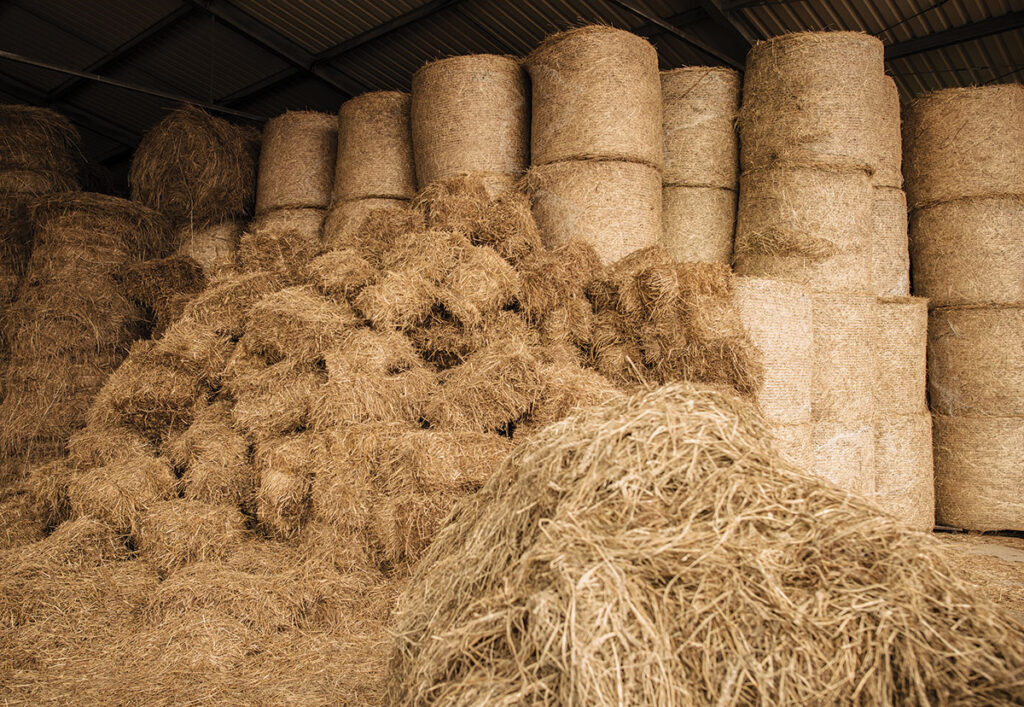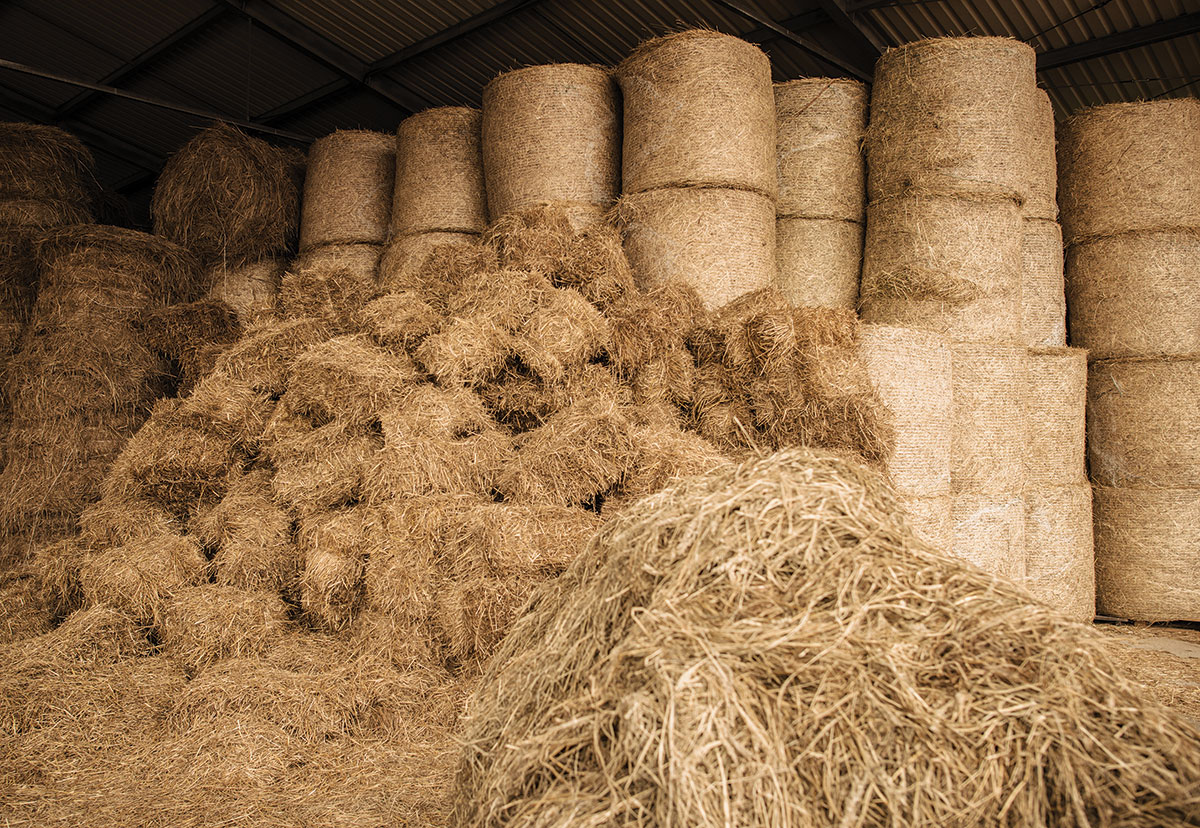
Management practices to reduce hay spoilage
Hay serves as a valuable resource for operations during the times of the year forage is scarce. Producers wanting to get the most out of their hay may want to take a close look at their storage methods. “Hay is too expensive, at least right now, to not manage well. Storing hay properly is a good place to start,” Terry Halleran, University of Missouri Extension agronomist, stated.
Proper Storage
If hay is stored outside, the worst place to store it is in the field where it was mowed, raked, and baled. Leaving hay bales in the field exposes the ends of the bale to the elements. The bale will wick moisture from the ground and retain moisture that falls causing spoilage.
When determining the best place to store hay, agronomists suggest keeping in mind two words: high and dry. The highest, driest area on the operation is the best place to put hay. “You want to avoid setting the hay in low spots or putting it in places where the water is going to run. You want to get it in an elevated area,” Halleran explained.
Additionally, when storing hay outside line up the bales north to south. This orientation helps the bale to dry off more quickly due to its positioning with the sun.
Stacking round bales in a triangle pattern (two rows with one on top), can cause hay loss. “The problem with that is, unless the hay is covered, wherever the bales touch the ground you are going to lose hay. And wherever the bales touch the bales you are going to lose hay because those become wet spots in the bales,” Halleran added.
Preventing Moisture
One of the best strategies to reduce the amount of moisture absorbed by dry bales is to line the ground with a thick layer of plastic then top it with a 4- to 5-inch layer of 2-inch rock. The barrier will create distance between the wet ground and the bale, thus reducing hay rot. Pallets can also be used to get bales off the ground.
Regarding the different types of bale wraps, some materials shed water better than others. When ranking wraps in order from the least protection to the most protection the rundown goes as follows: sisal twine, net wrap, and silage wrap. A thicker plastic wrap such as a silage wrap sheds more water than other wraps. However, it is more expensive than sisal twine or net wrap.
Once the bales are wrapped and stacked, agronomists recommend covering the bales with tarps if possible. The more steps producers take to shield the bales from the elements, the less chances of hay spoilage.
Hay Barns
First, consider how much hay waste occurs per bale on the operation. “There are so many factors in this. For example, is the bale a good tight bale? Did you use sisal or net wrap? Do you cover it? Things like that. But a normal bale, net wrapped and lined along the fence row, if it is not fed within six months or so, you are probably going to lose 15 percent of that bale,” Halleran shared.
On average a bale stored outside for approximately six months will lose to spoilage the outer 2 to 3 inches and about 12 inches on the bottom. If the bale is carried over to a year, then the loss is almost double that amount. But if that same hay would have been properly stored in a barn, there would be little to no loss.
To determine if building a hay barn is feasible, a starting point would be to determine how much loss per outside stored bale is occurring, multiply that figure by number of bales and then by a period of time.
For the sake of simplicity, Halleran provides an example using a hundred bales costing $100 each and stored outside. If producers lose 30 percent or $30 a bale each year over a course of 10 years – that’s $30,000.
“If you are going to be in the farming game for several years, a hay barn will pay for itself. But if you are going to get in and get out in five years, absolutely not,” Halleran stated. “Hay barns are usually worth the money, it’s just the initial shock of saying I am going to spend that kind of money for a barn.”
Additionally, keep in mind a hay barn can be used to store equipment and machinery, bulk grain, or commodities. There are other ways to incorporate a hay barn into the operation other than simply storing hay.







